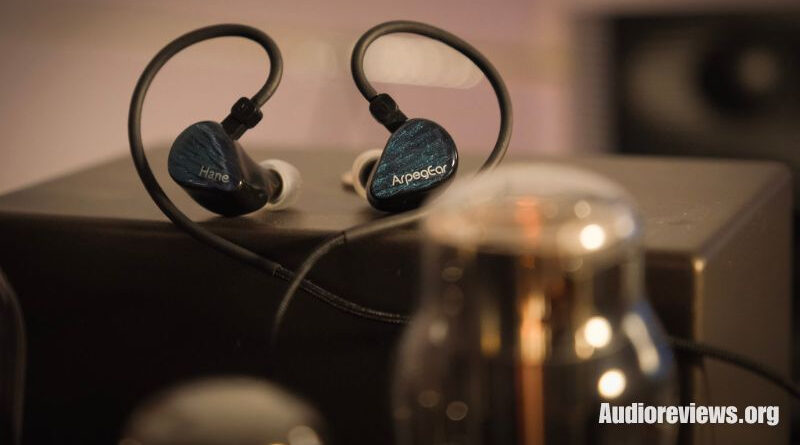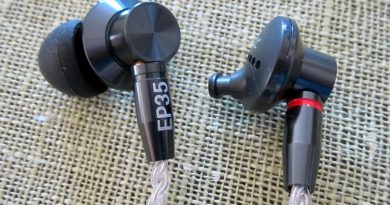Topping ArpegEar Hane IEM Review – The Tube IEMs
Topping’s first venture into IEMs sounds quite pedestrian but comes with a surprise – the 80-ohm Hane works wonders with OTL tube amps.
PROS
- Tuned quite safely with room for adjustment
- High load impedance allows for OTL drive
- Best implementation of tuning switches
CONS
- The cable is very microphonic
- The default tuning can be sibilant
- No real sonic standout qualities
Table of Contents
Introduction
Topping is already a regular in the so-called Chi-fi scene and known mostly for their electronics which regularly set measured performance records. Subjectivists hate them and hardcore objectivists love them. I was skeptical about the Hane at first thinking that Topping is trying to bank on their brand and release another me-too neutral IEM. After all the market can only bear so many Truethear Zero Reds and I don’t really love reviewing them. Might as well save everyone time and just blurt out that they’re decent enough.
The Topping ArpegEar Hane is a bit different in that it shoots for a popular target curve and adds four tuning switches which essentially change the tilt of the tonal response. I like their approach because according to Harman research, that’s what most people want – a good target and some room for adjustment to taste.
Will Topping prove that perfect measurements translate into sonic bliss or will the Hane be an also-ran with many well-tuned IEMs already on the market at more competitive prices? Read on to find out!
Specifications
| Drivers: 10mm DD bass driver Impedance: 80 ohms Sensitivity: 115dB/Vrms Frequency Range: 5-35 000Hz Cable: braided copper cable, 1.5m Connector: 2pin 0.78 mm, 3.5mm TRS Tested at: $109 Purchase Link: Shenzhen Audio |
Physical Things and Usability
| In The Box: IEMs, 1.5m cable, pin-tool for switches, eartips 6x pairs, carrying pouch, user manual |
| Appearance, Haptic, Build Quality: the shell is all acrylic with an eye-catching faceplate design |
| Ergonomics: the eartips fit well but the cable is quite microphonic and the tuning switches need a special tool to be accessed |
| Comfort, Fit: the earshells are medium-sized and should fit most ears quite well |
| Isolation: mostly in line with other ported shell IEMs |
Build quality
In general, I’m quite happy with what Topping has done with the Hane – the acrylic earshell is made quite well and neither of the mechanical parts seem prone to breaking. The nozzles have retention lips which keep the tips on more securely even when things get oily from ear gunk. The tips themselves are an interesting bunch – 3x S/M/L narrow-bore silicon, 2x M-sized foamies, and a single pair of M-sized wide-bores. If your ears need smaller than M-size, you’re screwed as only the small narrow-bores will fit.
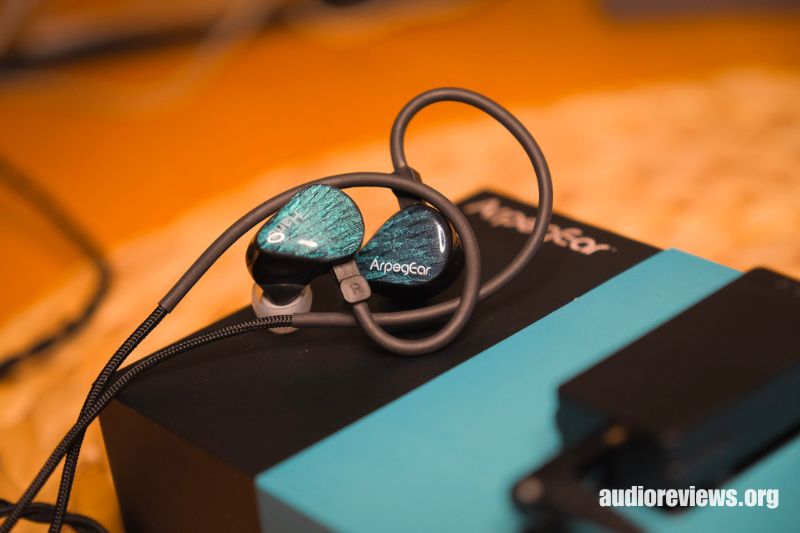
I’m usually pretty relaxed about IEM cables, especially at this price range but unfortunately, the Hane comes with a pretty ho-hum cord. Right until the splitter the cloth-covered wires are twisted and then split into individual straight cords for each IEM. Nevermind the cheap feel, my main gripe is the very pronounced microphonics. Noise from rubbing against clothing or the desk happily creeps into the IEMs and persists being a nuisance.
Eartips
The Topping Hane comes with an unusual assortment of eartips. Only the default narrow-bore silicon tips have the full small, medium, and large sizes present. Most of my listening was done with the sole pair of wide-bore tips which luckily fit my ears pretty well. As always, they did increase the highs a bit compared to other tips but it didn’t bother me much as I used the dip switches to compensate. The Comply-like foamies were the same story as usual – even if the Hane sometimes need some taming up high, the tradeoff was always reduced imaging performance.
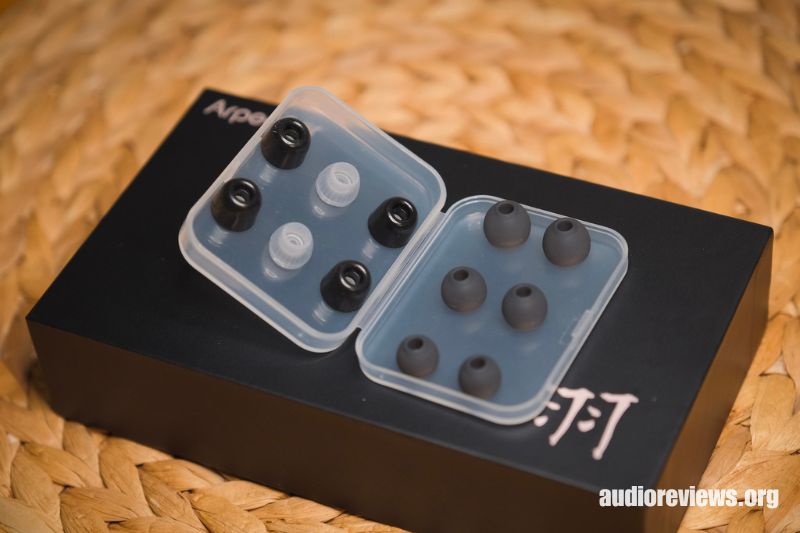
Sound quality and signature
Test setup: On the go, I used my Qudelix 5K and FiiO Q15, while desktop use was tested mostly on the FiiO K19 and Feliks Audio Euforia Evo combo. Occasionally Ifi Go Bar Kensei and FiiO KA17 were used.
Before we delve into the sound quality analysis, let’s start off with some practical matters. If you look at the spec sheet, one number should stick out – the 80-ohm load impedance. I’m quite sure it’s the highest of any IEM out there. Some earbuds come in 300 ohms and higher but the small dynamic drivers found in IEMs rarely allow for high-impedance voice coils. And the “low impedance means ease of drive” myth is still alive and well, sadly.
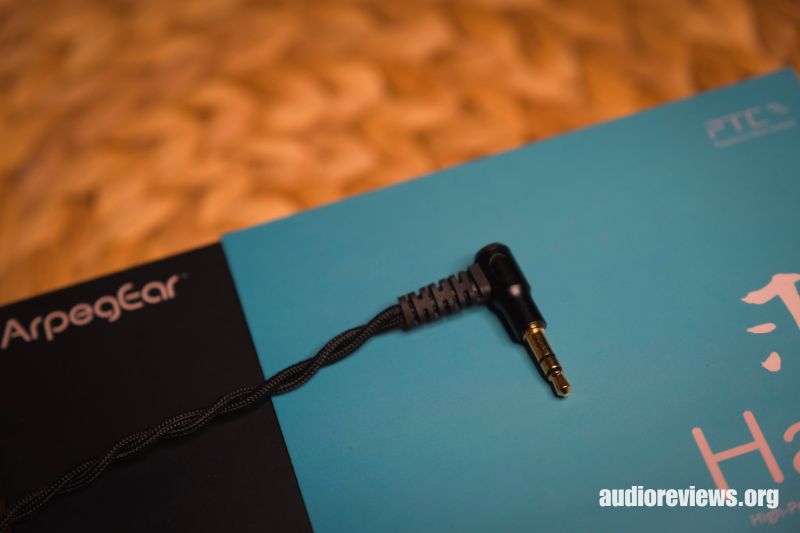
Despite the relatively high impedance all of my dinky dongles had no problem driving the Topping Hane. Of course, I had to bump the volume up but none really needed upping the gain to medium or high. And there was no trace of clipping even at high volumes. The 80-ohm voice coil brought another surprise – the Hane worked wonderfully with my Feliks Audio Euforia Evo OTL tube amp. There was no noise and the tonal response didn’t seem skewed due to interaction with the output impedance of the amp. I liked the combo so much that most of my desktop listening was done this way.
By default, the Topping Hane is a neutral to bright-sounding IEM. Some might appreciate the stock tone but most will have to get creative with the tuning switches. There are four in total and I was pleasantly surprised how well they are implemented. The first two switches increase the low end. The first one is a pure +2dB sub-bass boost whilst the second boosts both the sub and the mid-bass by +4dB which I could use to create a slight U-shaped curve for a more fun signature.
The remaining two switches take care of the ear-gain region and up. The third switch reduces overall treble while the last one boosts it for true treble-freaks. Combining the first two engages a +6dB bass boost while switching both the third and the fourth will attenuate only the ear-gain region of 3-7kHz.
With a U-shaped tone dialed in, the treble stuck out no more, and there was enough booty to boogie. Technicalities are where the Topping Hane falls a bit flat. Sure, we get the nice coherence that only single-driver IEMs provide at this price point, and with the right recording the imaging can be nice and enveloping. At the same time, there are competitors that do it better. With the default tuning we get a sense of resolution but after putting the low end in line with the treble, it’s apparent that it was artificial due to the emphasized highs.
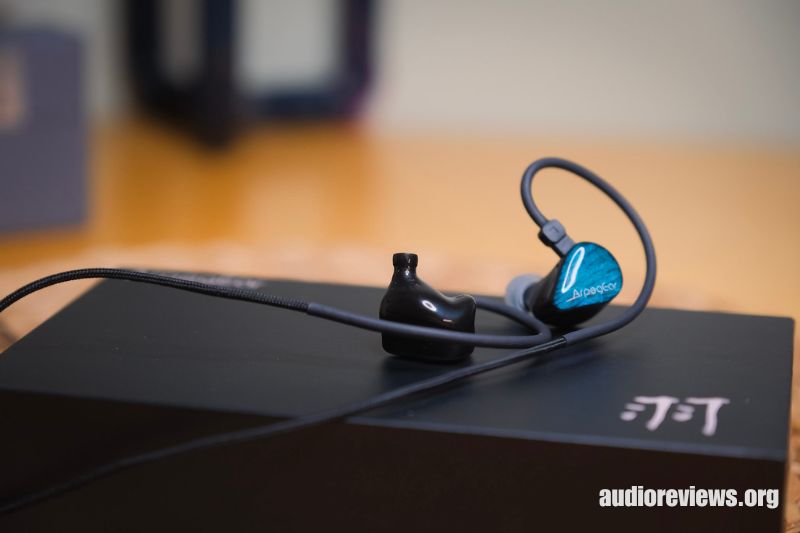
Select comparisons
Simgot EA500LM
The EA500LM was one of the FOTM IEMs earlier this year. Sporting a more neutral tuning than the admittedly bright EA500 it won many hearts with its decent technicalities and three types of tuning nozzles which allowed for different flavorings. Despite coming with only okay accessories, the IEM had nice build quality and its small size ensured that it fit just about every ear out there.
Even if the Simgot EA500LM is the more colored IEM, with most music it sounds more bold and more hi-fi. It also edges out the Hane in terms of raw technical performance, if only by a hair. The choice between the two boils down to how important is neutrality to you.
Pairing notes
I had the time of my life when I paired the Topping Hane with my OTL tube amp. As OTLs go, the Euforia Evo is on the more neutral side, so warmer solid-state amps can also be just what the doctor ordered. I’d only steer clear from very cold and analytic chains as those would be exacerbated by the slight treble emphasis of the Hane.
Concluding Remarks
For a debut release, the Topping ArpegEar Hane is very okay. The real problem is that there are other objectively neutral IEMs at the price point. I wouldn’t have much trouble recommending the Topping Hane universally if only there weren’t IEMs like the Truthear Hexa or other neutral choices. But there’s one exception – if you like your OTL tubes and the old HD650 is too open, the Hane is a great choice. It’s also one of the best implementations of tuning switches, so you can mold it to your liking. I hope Topping continues their ArpegEar line of IEMs, so this can be the start of a great story!
My verdict – 3.5/5
Disclaimer
Thanks to Shenzhen Audio for supplying the review sample. As always, they had no say in the review process and didn’t see the review before posting.



